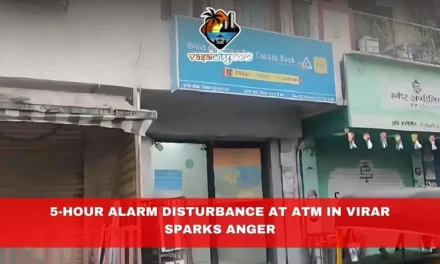Vasai: In a landmark decision, Maharashtra is set to build its first double-decker bridge over the Bhayandar Creek. This innovative structure will feature a metro rail line on the upper deck and a road bridge for vehicles on the lower deck. The Maharashtra Metropolitan Region Development Authority (MMRDA) has recently approved this project, which is expected to streamline the metro route through Vasai and provide much-needed connectivity for the region.
The project comes as part of the broader Metro 13 initiative, which aims to connect the Mira-Bhayandar area with Vasai-Virar. The decision to construct this bridge takes into account the growing population and rapid urbanization in Vasai, Virar, and Mira-Bhayandar. The entire metro route from Mira Road to Virar will span 23 kilometers and will include 20 stations.
However, the development of the metro line faced a significant challenge due to the creek separating the regions. Several options were explored to navigate this issue, including extending the metro line from the ongoing JNPT port project, which already has a metro route that could potentially connect Palghar and Vasai. Yet, these alternatives were either too costly or time-consuming.
MLA Hitendra Thakur proposed the idea of constructing a double-decker bridge over the Bhayandar Creek as a more feasible solution. His proposal was backed by MLAs Kshitij Thakur and Rajesh Patil, who campaigned for the project’s approval. Finally, in a recent meeting, the MMRDA gave the green light to this ambitious plan.
A Cost-Effective Solution
The decision to build the double-decker bridge not only solves the logistical problem of crossing the creek but also promises significant cost savings for the metro project. The Delhi Metro Rail Corporation (DMRC) had already been appointed as a consultant for the Mira-Bhayandar to Vasai-Virar metro line. With the addition of the double-decker bridge, the metro route will now be seamlessly connected to the existing infrastructure.
This innovative design, where the metro will run on the upper deck and vehicles on the lower deck, allows for the efficient use of space and resources. By using a single set of pillars to support both the metro line and the road bridge, the construction costs are expected to be reduced considerably.
The Path Forward
The approval of this project marks a significant step forward in improving the transportation infrastructure in the Vasai-Virar region. The double-decker bridge will not only facilitate the metro route but will also ease traffic congestion by providing an additional route for vehicles across the creek. This is particularly important given the region’s rapid urbanization and the increasing demand for reliable public transportation.
Once completed, the metro line will connect key areas, offering residents a faster and more efficient mode of transport. The 23-kilometer route with 20 stations is designed to cater to the growing population, making daily commutes easier for thousands of people.
The project is expected to have a profound impact on the local economy as well. Improved connectivity will likely attract more businesses and residents to the area, spurring further development and boosting the local economy. Additionally, the metro line will reduce the reliance on private vehicles, leading to less traffic congestion and a reduction in pollution levels.
Challenges Ahead
Despite the promising prospects, the project is not without its challenges. Constructing a double-decker bridge over a creek is a complex engineering task that requires careful planning and execution. Ensuring the safety and stability of the structure will be paramount, especially given the region’s monsoon climate and the potential for flooding.
Moreover, the project will need to navigate the various environmental regulations that protect the creek and its surrounding areas. Any construction activity in such a sensitive area must be carried out with the utmost care to minimize the environmental impact.
The MMRDA will also need to coordinate closely with various stakeholders, including local authorities, environmental groups, and the public, to ensure that the project is completed on time and within budget.
A Vision for the Future
The double-decker bridge over Bhayandar Creek is more than just a piece of infrastructure; it is a symbol of the region’s progress and a vision for the future. As Maharashtra’s first double-decker bridge, it represents a significant engineering achievement and a commitment to improving the quality of life for the people of Vasai, Virar, and Mira-Bhayandar.
The bridge will not only serve as a critical link in the metro network but will also stand as a testament to the region’s growth and development. It is a project that will bring lasting benefits to the community, providing better connectivity, reducing travel times, and enhancing the overall transportation network.
As the project moves forward, it will be closely watched by other regions and cities, potentially serving as a model for future infrastructure projects in India. The successful completion of the double-decker bridge could pave the way for similar projects across the country, helping to address the transportation challenges faced by many rapidly growing urban areas.
Conclusion
The approval of the double-decker bridge over Bhayandar Creek marks a major milestone in the development of the Vasai-Virar region. This innovative project will not only improve connectivity but also set a new standard for infrastructure development in Maharashtra. By addressing the challenges of crossing the creek with a cost-effective and efficient solution, the project promises to bring significant benefits to the region and its residents.
As the construction begins, the people of Vasai, Virar, and Mira-Bhayandar can look forward to a future with better transportation options, reduced traffic congestion, and a more connected community. The double-decker bridge is more than just a solution to a problem; it is a bold step toward a brighter, more connected future for the entire region.









